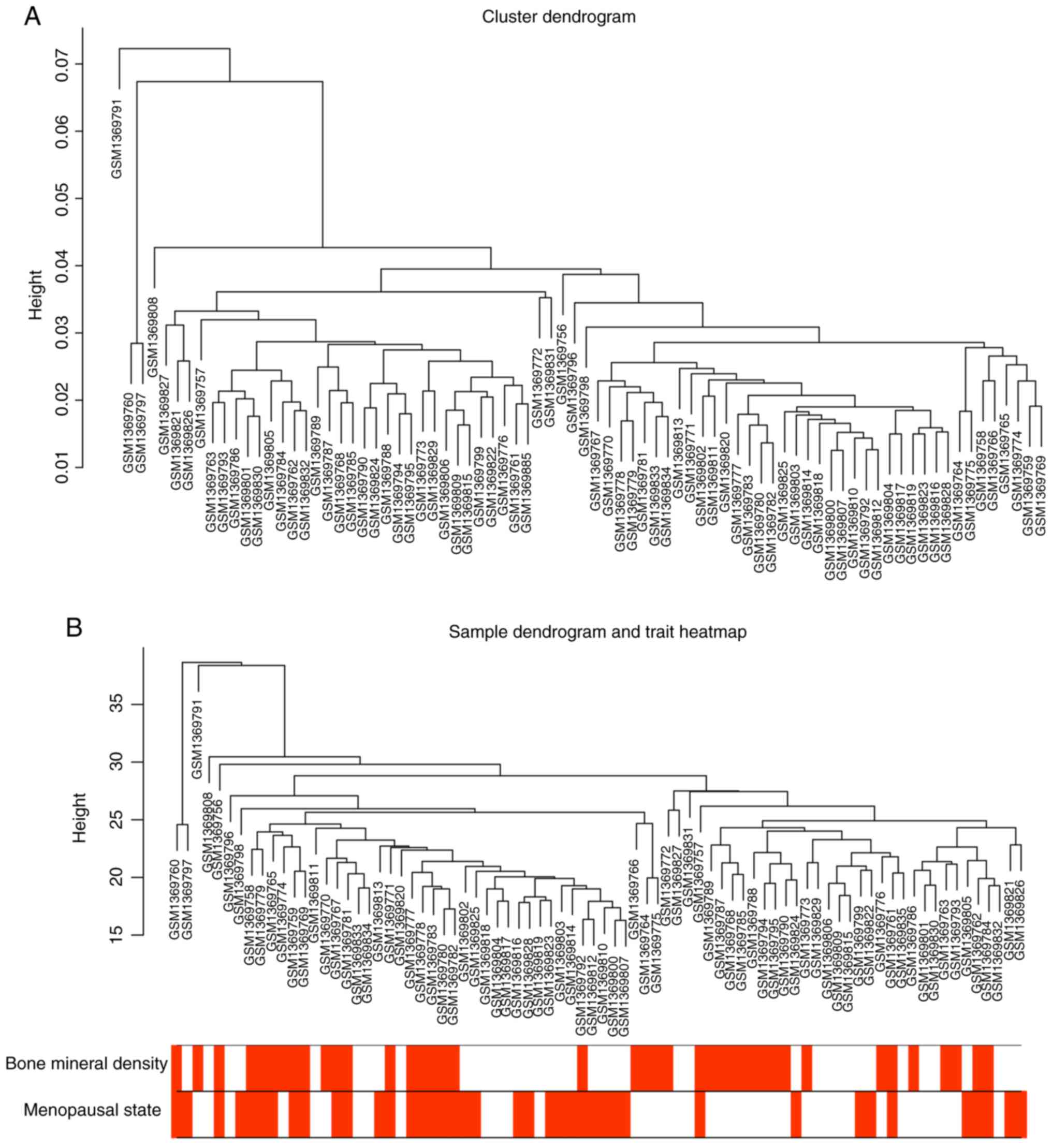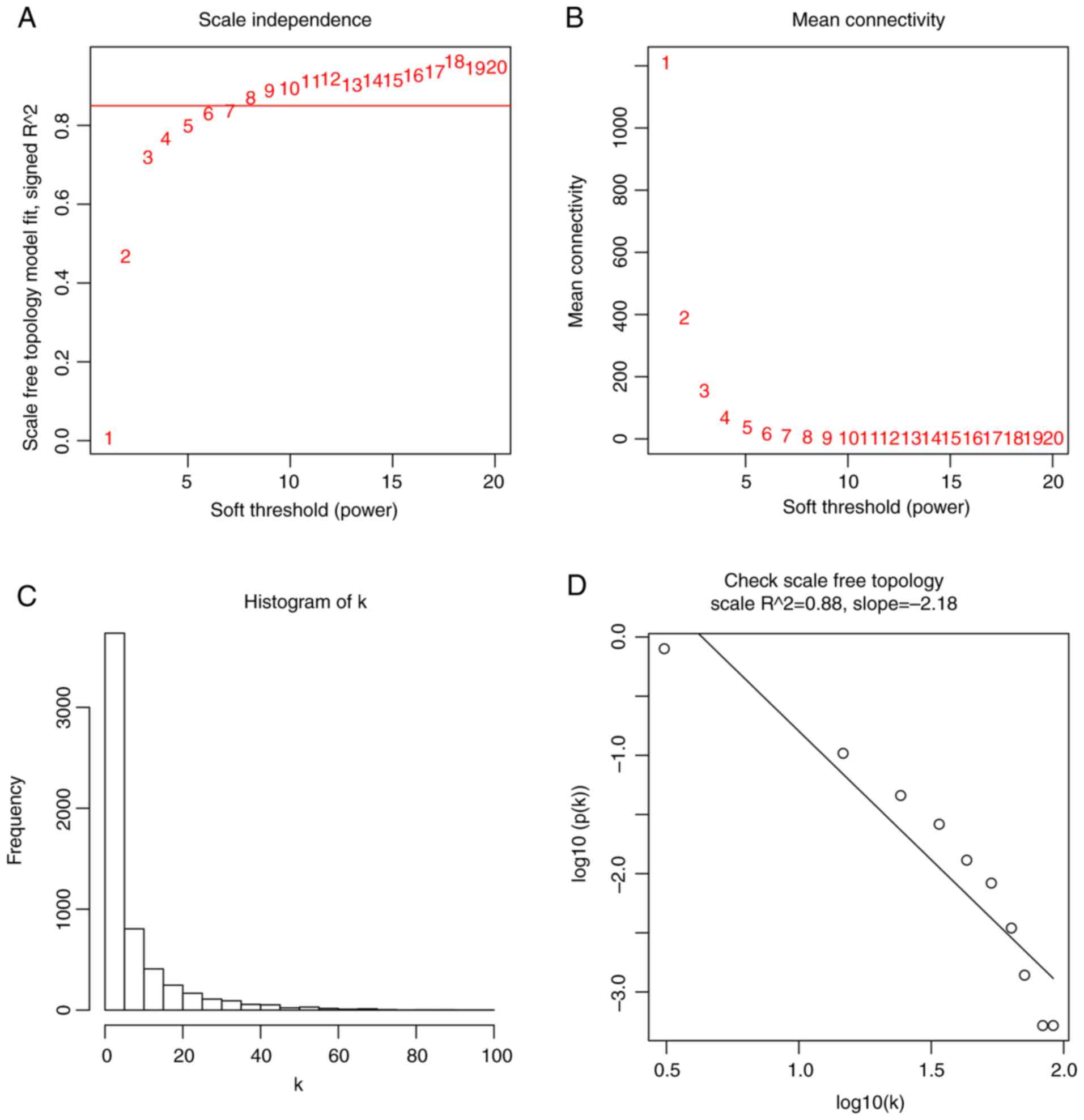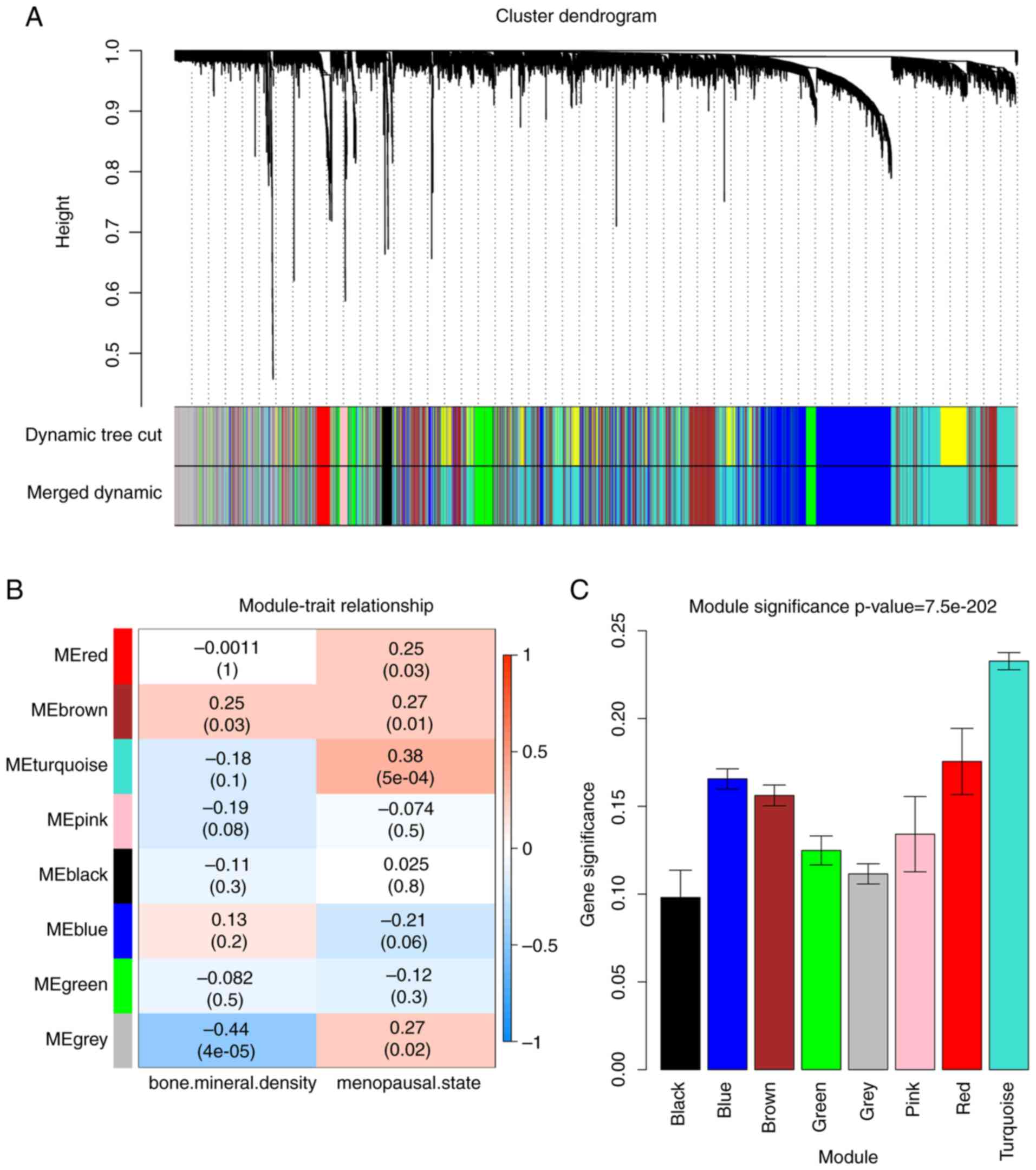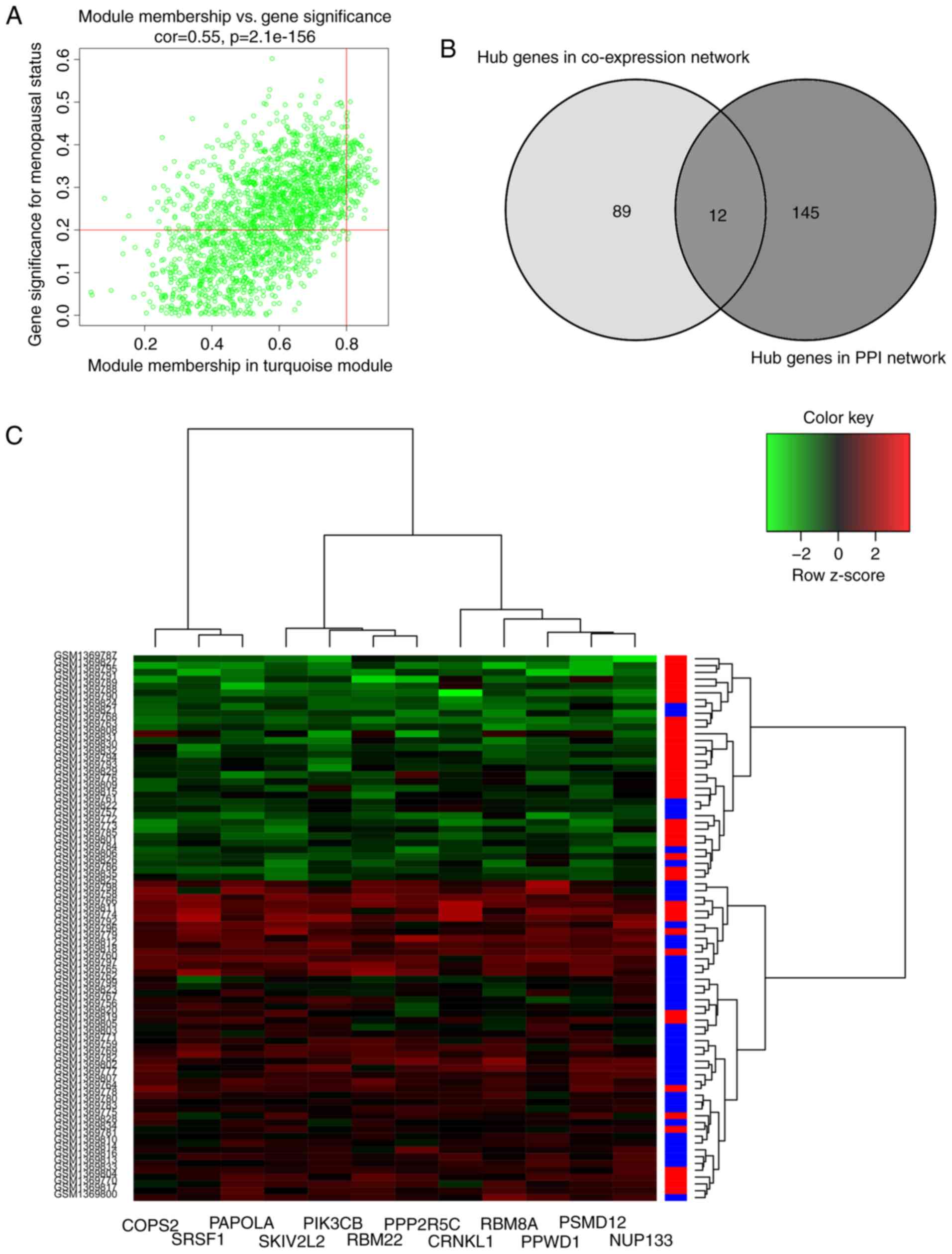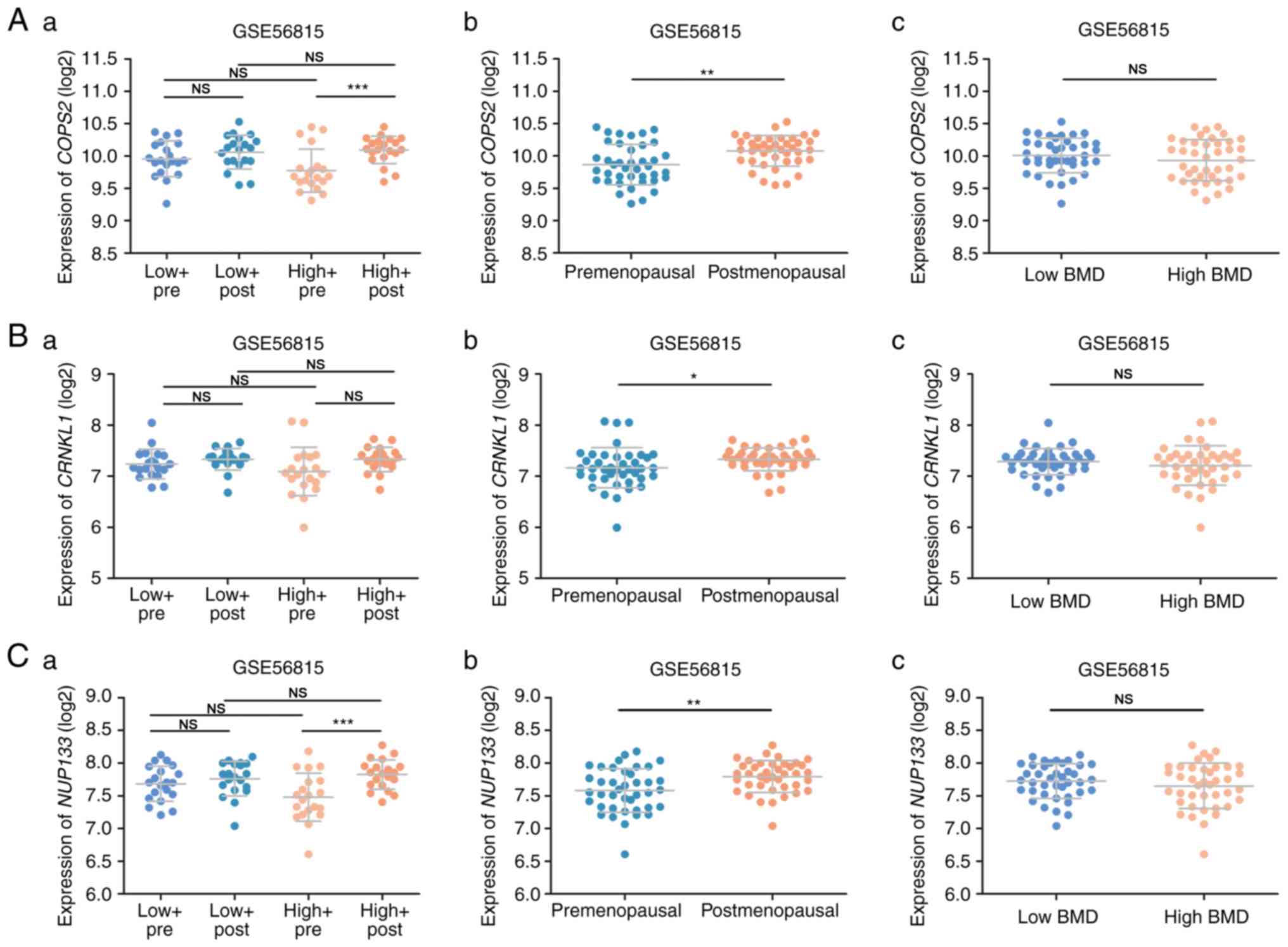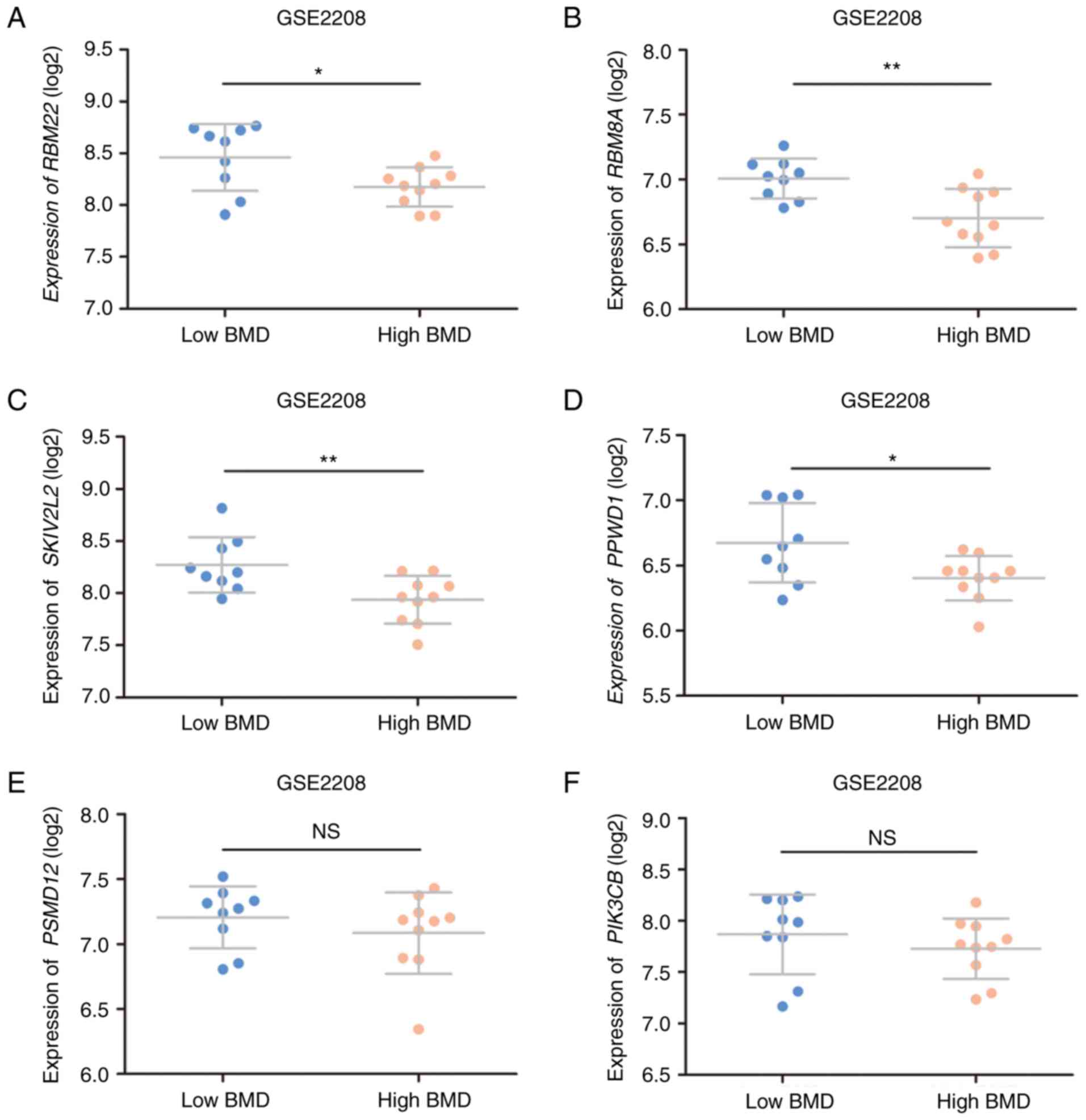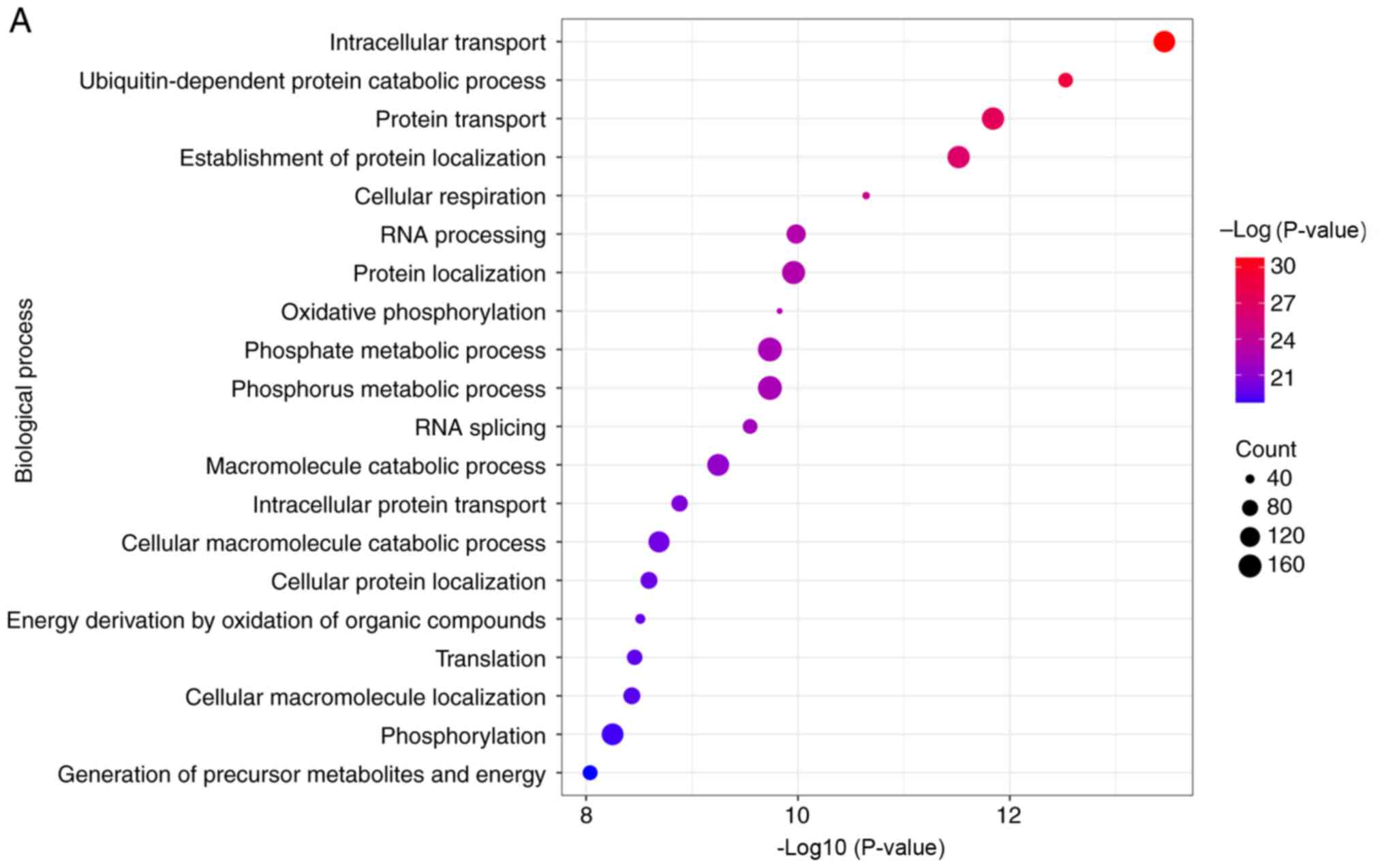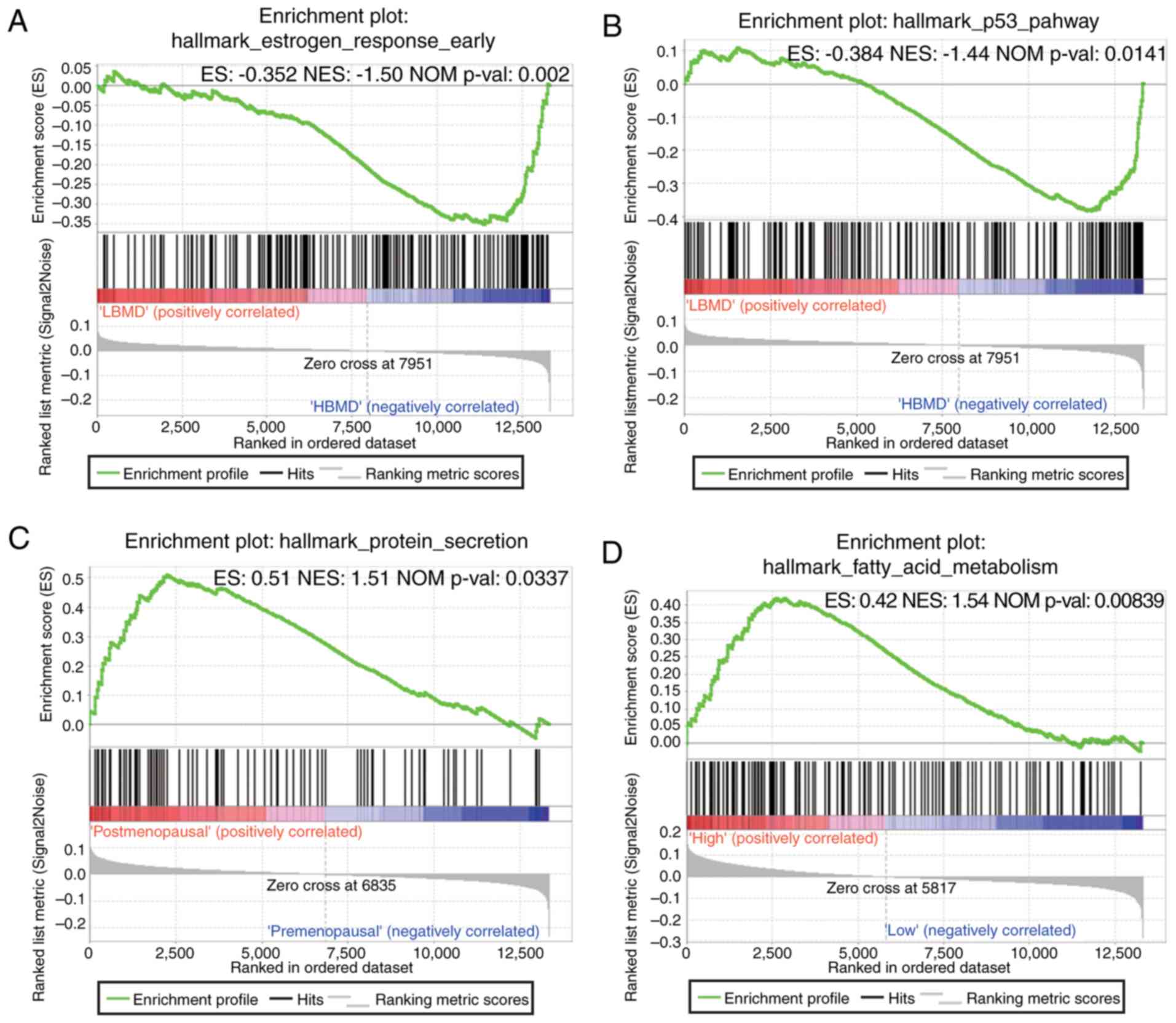|
1
|
Kanis JA, Melton LJ III, Christiansen C,
Johnston CC and Khaltaev N: The diagnosis of osteoporosis. J Bone
Miner Res. 9:1137–1141. 1994. View Article : Google Scholar : PubMed/NCBI
|
|
2
|
Si L, Winzenberg TM, Jiang Q, Chen M and
Palmer AJ: Projection of osteoporosis-related fractures and costs
in China: 2010–2050. Osteoporos Int. 26:1929–1937. 2015. View Article : Google Scholar : PubMed/NCBI
|
|
3
|
Burge R, Dawson-Hughes B, Solomon DH, Wong
JB, King A and Tosteson A: Incidence and economic burden of
osteoporosis-related fractures in the United States, 2005–2025. J
Bone Miner Res. 22:4652007. View Article : Google Scholar : PubMed/NCBI
|
|
4
|
Eastell R, O'Neill TW, Hofbauer LC,
Langdahl B, Reid IR, Gold DT and Cummings SR: Postmenopausal
osteoporosis. Nat Rev Dis Primers. 2:160692016. View Article : Google Scholar : PubMed/NCBI
|
|
5
|
Almeida M, Martin-Millan M, Ambrogini E,
Bradsher R III, Han L, Chen XD, Roberson PK, Weinstein RS, O'Brien
CA, Jilka RL and Manolagas SC: Estrogens attenuate oxidative stress
and the differentiation and apoptosis of osteoblasts by
DNA-binding-independent actions of the ERα. J Bone Miner Res.
25:769–781. 2010.PubMed/NCBI
|
|
6
|
Goettsch C, Babelova A, Trummer O, Erben
RG, Rauner M, Rammelt S, Weissmann N, Weinberger V, Benkhoff S,
Kampschulte M, et al: NADPH oxidase 4 limits bone mass by promoting
osteoclastogenesis. J Clin Inves. 123:4731–4738. 2013. View Article : Google Scholar
|
|
7
|
Langfelder P and Horvath S: WGCNA: An R
package for weighted correlation network analysis. BMC
Bioinformatics. 9:5592008. View Article : Google Scholar : PubMed/NCBI
|
|
8
|
Yuan L, Zeng G, Chen L, Wang G and Wang X,
Cao X, Lu M, Liu X, Qian G, Xiao Y and Wang X: Identification of
key genes and pathways in human clear cell renal cell carcinoma
(ccRCC) by co-expression analysis. Int J Biol Sci. 14:266–279.
2018. View Article : Google Scholar : PubMed/NCBI
|
|
9
|
Chen L, Yuan L, Wang Y, Wang G, Zhu Y, Cao
R, Qian G, Xie C, Liu X, Xiao Y and Wang X: Co-expression network
analysis identified FCER1G in association with progression and
prognosis in human clear cell renal cell carcinoma. Int J Biol Sci.
13:1361–1372. 2017. View Article : Google Scholar : PubMed/NCBI
|
|
10
|
Yuan L, Chen L, Qian K, Wang G, Lu M, Qian
G, Cao X, Jiang W, Xiao Y and Wang X: A novel correlation
betweenATP5A1gene expression and progression of human clear cell
renal cell carcinoma identified by co-expression analysis. Oncol
Rep. 39:5252018.PubMed/NCBI
|
|
11
|
Yuan L, Chen L, Qian K, Qian G, Wu CL,
Wang X and Xiao Y: Co-expression network analysis identified six
hub genes in association with progression and prognosis in human
clear cell renal cell carcinoma (ccRCC). Genom Data. 14:132–140.
2017. View Article : Google Scholar : PubMed/NCBI
|
|
12
|
Chen L, Yuan L, Wang G, Cao R, Peng J, Shu
B, Qian G, Wang X and Xiao Y: Identification and bioinformatics
analysis of miRNAs associated with human muscle invasive bladder
cancer. Mol Med Rep. 16:8709–8720. 2017. View Article : Google Scholar : PubMed/NCBI
|
|
13
|
Yuan L, Shu B, Chen L, Qian K, Wang Y,
Qian G, Zhu Y, Cao X, Xie C, Xiao Y and Wang X: Overexpression of
COL3A1 confers a poor prognosis in human bladder cancer identified
by co-expression analysis. Oncotarget. 8:70508–70520. 2017.
View Article : Google Scholar : PubMed/NCBI
|
|
14
|
Shi H, Zhang L, Qu Y, Hou L, Wang L and
Zheng M: Prognostic genes of breast cancer revealed by gene
co-expression network analysis. Oncol Lett. 14:4535–4542. 2017.
View Article : Google Scholar : PubMed/NCBI
|
|
15
|
Zhang Y, Wang J, Ji LJ, Li L, Wei M, Zhen
S and Wen CC: Identification of key gene modules of neuropathic
pain by co-expression analysis. J Cell Biochem. 118:44362017.
View Article : Google Scholar : PubMed/NCBI
|
|
16
|
Horvath S and Dong J: Geometric
interpretation of gene co-expression network analysis. PLoS Comput
Biol. 4:e10001172008. View Article : Google Scholar : PubMed/NCBI
|
|
17
|
Farber CR: Identification of a gene module
associated with BMD through the integration of network analysis and
genome-wide association data. J Bone Miner Res. 25:2359–2367. 2010.
View Article : Google Scholar : PubMed/NCBI
|
|
18
|
Zhang L, Liu YZ, Zeng Y, Zhu W, Zhao YC,
Zhang JG, Zhu JQ, He H, Shen H, Tian Q, et al: Network-based
proteomic analysis for postmenopausal osteoporosis in Caucasian
females. Proteomics. 16:12–28. 2016. View Article : Google Scholar : PubMed/NCBI
|
|
19
|
Chen YC, Guo YF, He H, He H, Lin X, Wang
XF, Zhou R, Li WT, Pan DY, Shen J and Deng HW: Integrative analysis
of genomics and transcriptome data to identify potential functional
genes of BMDs in females. J Bone Miner Res. 31:1041–1049. 2016.
View Article : Google Scholar : PubMed/NCBI
|
|
20
|
Nomura N, Nagase T, Miyajima N, Sazuka T,
Tanaka A, Sato S, Seki N, Kawarabayasi Y, Ishikawa K and Tabata S:
Prediction of the coding sequences of unidentified human genes. II.
The coding sequences of 40 new genes (KIAA0041-KIAA0080) deduced by
analysis of cDNA clones from human cell line KG-1 (supplement). DNA
Res. 1:251–162. 1994. View Article : Google Scholar : PubMed/NCBI
|
|
21
|
Jurica MS and Moore MJ: Pre-mRNA splicing:
Awash in a sea of proteins. Mol Cell. 12:5–14. 2003. View Article : Google Scholar : PubMed/NCBI
|
|
22
|
Davis TL, Walker JR, Ouyang H, MacKenzie
F, Butler-Cole C, Newman EM, Eisenmesser EZ and Dhe-Paganon S: The
crystal structure of human WD40 repeat-containing peptidylprolyl
isomerase (PPWD1). FEBS J. 275:2283–2295. 2008. View Article : Google Scholar : PubMed/NCBI
|
|
23
|
Lee WC, Guntur AR, Long F and Rosen CJ:
Energy metabolism of the osteoblast: Implications for osteoporosis.
Endocr Rev. 38:255–266. 2017. View Article : Google Scholar : PubMed/NCBI
|
|
24
|
Kruger MC, Coetzee M, Haag M and Weiler H:
Long-chain polyunsaturated fatty acids: Selected mechanisms of
action on bone. Prog Lipid Res. 49:438–449. 2010. View Article : Google Scholar : PubMed/NCBI
|
|
25
|
Frey JL, Li Z, Ellis JM, Zhang Q, Farber
CR, Aja S, Wolfgang MJ, Clemens TL and Riddle RC: Wnt-Lrp5
signaling regulates fatty acid metabolism in the osteoblast. Mol
Cell Biol. 35:1979–1991. 2015. View Article : Google Scholar : PubMed/NCBI
|
|
26
|
Kushwaha P, Wolfgang MJ and Riddle RC:
Fatty acid metabolism by the osteoblast. Bone. 115:8–14. 2018.
View Article : Google Scholar : PubMed/NCBI
|
|
27
|
Lin G, Wang H, Dai J, Li X, Guan M, Gao S,
Ding Q, Wang H and Fang H: Conjugated linoleic acid prevents
age-induced bone loss in mice by regulating both osteoblastogenesis
and adipogenesis. Biochem Biophys Res Commun. 490:813–823. 2017.
View Article : Google Scholar : PubMed/NCBI
|
|
28
|
Yeh LCC, Ford JJ, Lee JC and Adamo ML:
Palmitate attenuates osteoblast differentiation of fetal rat
calvarial cells. Biochem Biophys Res Commun. 450:777–781. 2014.
View Article : Google Scholar : PubMed/NCBI
|
|
29
|
Kim HJ, Yoon HJ, Kim SY and Yoon YR: A
medium-chain fatty acid, capric acid, inhibits RANKL-induced
osteoclast differentiation via the suppression of NF-κB signaling
and blocks cytoskeletal organization and survival in mature
osteoclasts. Mol Cells. 37:598–604. 2014. View Article : Google Scholar : PubMed/NCBI
|
|
30
|
Lavadogarcía J, Ronceromartin R, Moran JM,
Pedrera-Canal M, Aliaga I, Leal-Hernandez O, Rico-Martin S and
Canal- Macias ML: Long-chain omega-3 polyunsaturated fatty acid
dietary intake is positively associated with bone mineral density
in normal and osteopenic Spanish women. PLoS One. 13:e01905392018.
View Article : Google Scholar : PubMed/NCBI
|















